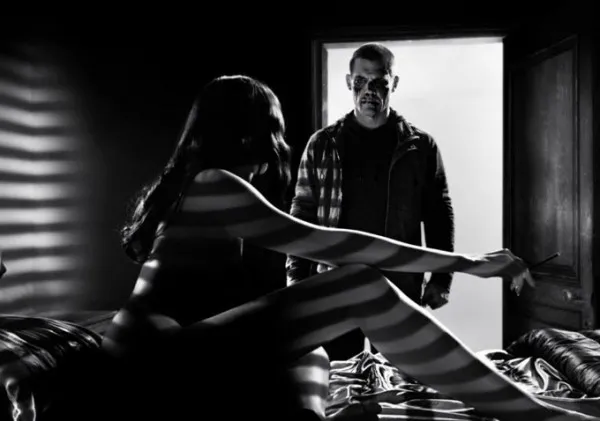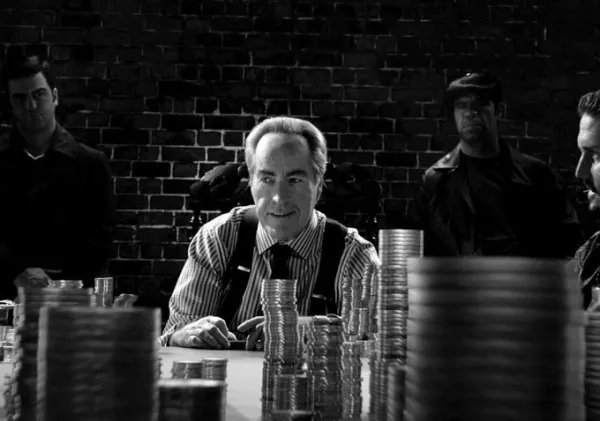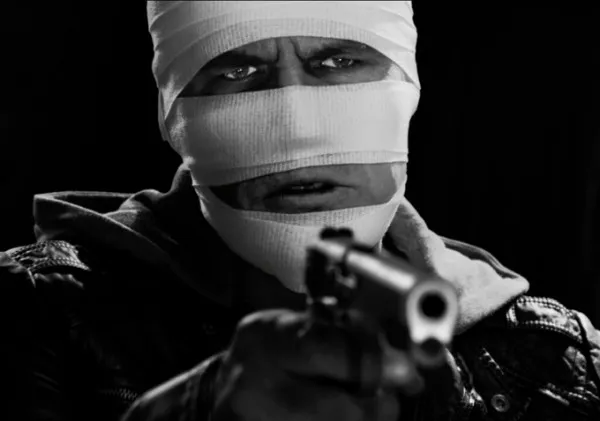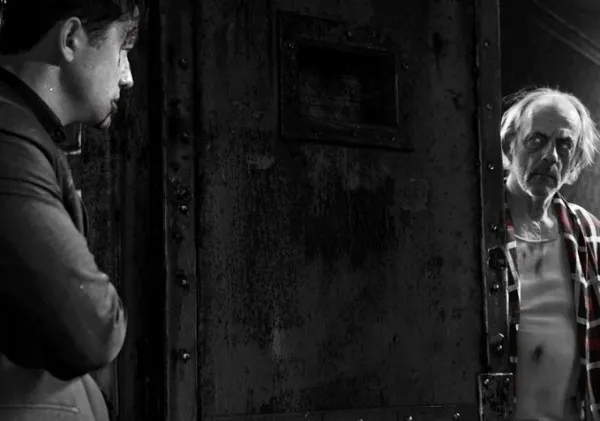“Sin City: A Dame to Kill For”: Visually Stunning, Narratively Weak
Waking up on a highway surrounded by corpses, the hulking Marv (Mickey Rourke) struggles to recall the events of the previous night. Young gambler Johnny (Joseph Gordon-Levitt) attempts to outwit the city’s most powerful gangster, Senator Roark (Powers Boothe), in a poker game. Private investigator Dwight (Josh Brolin) is confronted by the return of his former lover, Ava (Eva Green), now the wife of a wealthy businessman. Meanwhile, stripper Nancy (Jessica Alba) plots revenge against Senator Roark for the death of Detective Hartigan (Bruce Willis), who haunts her dreams and waking hours.
Pop star Lady Gaga makes a cameo as a waitress who helps Johnny in his plight.
The neo-noir anthology “Sin City” was a standout film of 2005. Its ensemble cast, vibrant characters, and Robert Rodriguez’s dynamic direction would have ensured its popularity even without its unique visual style, which earned it the Technical Grand Prize at the Cannes Film Festival. By filming the entire movie against a green screen, Rodriguez and his co-director Frank Miller, the renowned comic book creator, were able to freely manipulate the imagery, playing with contrasts of light and shadow, black and white, and selective color. “Sin City” was a feature film that looked like an artistic adult comic book – dark, captivating, violent, and simultaneously trashy and highly artistic.

Despite its experimental nature, “Sin City” was a box office success. However, due to various reasons, primarily legal issues, the sequel’s development was prolonged, and the long-awaited “Sin City: A Dame to Kill For” is only now being released. Was it worth holding our breath for nearly ten years for a new report from Basin City? Undoubtedly, if the first “Sin City” was primarily a surprising stylistic experiment for you.

Jamie Chung from “Sucker Punch” replaced Devon Aoki as the silent assassin Miho, as the actress from the first film was pregnant with her second child during filming.
Visuals vs. Narrative
Comparing any scenes from the two films, it’s easy to tell which one came first. In comparison to “Sin City: A Dame to Kill For,” the 2005 film seems like a first attempt. Visually, the sequel is bolder, more impressive, more uncompromising, and more inventive… and more comic book-like. Rodriguez and Miller have raised the bar significantly, especially in the action scenes, which have gained a dynamism and scale not seen in the first “Sin City.” However, it’s impossible to explain this in simple terms. “Sin City: A Dame to Kill For” needs to be seen to appreciate how far the filmmakers have pushed the artistic boundaries established in the previous film.

Storyline Shortcomings
The plot of “Sin City: A Dame to Kill For,” on the other hand, often elicits grimaces. It seems that all the authors’ inventiveness was spent on the visuals. The opening segment about Marv is amusing in a dark way, and the story about Dwight and Ava at least ticks the boxes of traditional noir tropes (a detective haunted by the past, a multifaceted femme fatale, a nightmarish crime boss…), although it offers nothing more engaging than Eva Green’s naked body. However, these two stories are borrowed from Miller’s comics, and the author clearly had time to develop them. The other two stories were created specifically for the film and feel hastily written, with minimal inspiration and wit.

The story about Johnny is particularly irritating, as it should have been full of unexpected plot twists and intricate “plans within plans” in the style of “The Sting.” Instead, the plot unfolds as straightforwardly as possible, and the ending is striking not for its cleverness but for the lack of ingenuity of the hero, who supposedly spent years preparing for his confrontation with Roark. Surely, he could have come up with something smarter than a three-point plan with the word PROFIT at the end! The story about Nancy is even more straightforward, but it’s essentially just an epilogue to the first film, and its intriguing plot threads were left behind in 2005.
Repetitive Elements
The most unpleasant aspect of the film is its repetitiveness. During the 100 minutes of screen time, the characters storm the mansions where their enemies are hiding three times (!!!). Marv (brilliantly played by Mickey Rourke) participates in two of these assaults. Yes, the three assault scenes are not exact copies, but couldn’t something else have been devised? For example, in one segment, the heroes storm a mansion, in another, a skyscraper, and in the third, a dungeon… Or they could have done without the three assaults altogether and invented something more original. As it is, when the characters embark on their third raid, it evokes nervous laughter and complete disappointment.